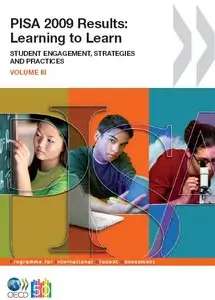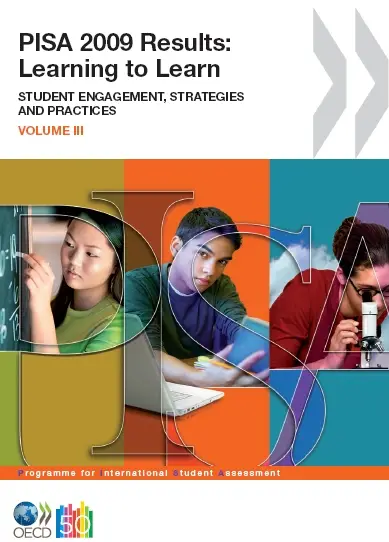PISA 2009 Results: Learning to Learn: Student Engagement, Strategies and Practices (Volume III)
OECD | 07 Dec 2010 | ISBN: 9264083943 | 270 pages | PDF | 5 MB
OECD | 07 Dec 2010 | ISBN: 9264083943 | 270 pages | PDF | 5 MB
Volume III of PISA 2009 results examines 15-year-olds’ motivation, their engagement with reading and their use of effective learning strategies. The book opens with an introduction to PISA and a reader's guide to help user's understand the findings.
Chapter 1 examines how engaging in reading activities and approaching learning positively relates to reading proficiency.
Chapter 2 examines how much students read for enjoyment, what they read, and how much they enjoy reading.
Chapter 3 examines the extent to which reading and learning habits relate to performance differences between boys and girls.
The final chapter discusses the policy implications of the findings.
Annexes provide detailed statistical data and technical information.
Table of Contents
Executive summary
Introduction to PISA
Reader’s Guide
Chapter 1 Effective Learners, Proficient Readers
How PISA 2009 examines engagement in reading and approaches to learning
Engagement in reading activities and reading performance
• Are students who enjoy reading better readers?
• The association between time spent reading for enjoyment and reading performance
• The association between the material students read and reading performance
• On line reading and reading performance of print texts
Approaches to learning and reading performance
• The association between strategies to understand and remember information and reading performance
• The association between strategies to summarise information and reading performance
• The association between the use of memorisation, elaboration and control strategies and reading performance
Do observed associations mirror the demographic and socio-economic background of students?
• What do high-performing readers look like?
Chapter 2 The Reading and Learning Habits of 15-Year-Olds
Profiles of readers
The reading habits of 15-year-old students
• How often do students read for enjoyment?
• What do students read for enjoyment?
• How much do students enjoy reading?
Approaches to learning
• Awareness of effective strategies to understand and remember information
• Awareness of effective strategies to summarise informatio
• Use of memorisation, elaboration and control strategies
Chapter 3 Tackling gender and socio-economic inequalities in reading
Inequalities in reading performance and the role of engagement in reading and learning strategies86
How reading habits and approaches to learning mediate the gender gap in reading performance88
How reading habits and approaches to learning mediate socio-economic inequities in reading performance
The underachievement of disadvantaged boys
Policy Implications
Engagement in reading matters
Approaches to learning matter
Levelling the playing field matters
References
Annex A Te chnical Background
Annex A1: Construction of reading scales and indices from the student, school and parent context questionnaires
Annex A2: T he PISA target population, the PISA samples and the definition of schools
Annex A3: Standard errors, significance tests and sub-group comparisons
Annex A4: Quality assurance
Annex A5: L atent profile analysis
Annex B Table s of results
Annex B1: Results for countries and economies
Annex B2: Results for regions within countries
Annex C The devel opment and imple mentation of PISA – A coll aborative effort
with TOC BookMarkLinks
More : You find here



